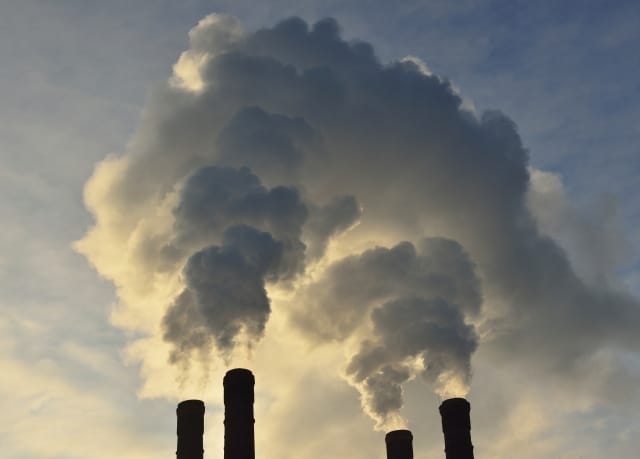The U.S. government could be drastically underestimating how much climate change is going to cost us, according to a study published by Stanford researchers in the journal Nature Climate Change.
The researchers concluded that the Obama Administration is using a Social Cost of Carbon estimate that may be just one-sixth of the true cost—and that the true cost is high enough to justify aggressive measures for lowering emissions enough to limit global temperature rise to the 2 degrees Celsius that scientists tell us is the threshold for averting catastrophic climate change.
The Social Cost of Carbon is an official estimate of how much economic damage will be caused per metric ton of carbon emitted into our atmosphere—damages like lower crop yields and higher healthcare costs. It is used by the EPA and other federal agencies to calculate the benefits of policies intended to improve energy efficiency, lower emissions, and combat climate change. It is also often used to justify not taking action if the proposed action would cost more than the damage it is intended to mitigate.
The Obama Administration raised its official estimate of the economic cost of a metric ton of CO2 from $21 to $37 in November 2013. Even back then, however, many experts challenged that estimate as far too low.
According to the team at Stanford, that estimate was way too low—they calculate the true Social Cost of Carbon as $220 per metric ton.
“The $37 per ton estimate is based on models that assume climate change can not affect the growth rates of the economy,” Frances Moore of Stanford’s School of Earth Sciences told DeSmogBlog. “Our $220 per ton estimate is based on a model that includes possible effects of climate change on economic growth rates. The magnitude of these effects is calibrated to recent empirical results that find a statistical relationship between warmer temperatures and slower growth.”
While it may seem obvious that higher global temperatures, more frequent extreme weather events, ocean acidification, sea level rise, and all of the other impacts of climate change could hinder economic growth, Moore says that until now there has not been enough empirical evidence for it to be factored into the integrated assessment models used to arrive at current estimates.
But recent studies have found a link between global temperatures and economic growth rates and a connection between tropical cyclones and slower economic growth, providing Moore and her team with the empirical evidence they needed to recalculate the amount of economic damage a ton of carbon will be responsible for.
“If climate change affects not only a country’s economic output but also its growth, then that has a permanent effect that accumulates over time, leading to a much higher social cost of carbon,” Moore said in a press release.
It’s well known that climate change is impacting many of the world’s developing countries first and most severely. Moore’s co-author, Delavane Diaz of Stanford’s School of Engineering, says that the more accurate Social Cost of Carbon she and Moore have estimated could help policymakers in those countries determine the best response.
“If poor countries become less vulnerable to climate change as they become richer, then delaying some emissions reductions until they are more fully developed may in fact be the best policy,” Diaz said. “Our model shows that this is a major uncertainty in mitigation policy, and one not explored much in previous work.”
Diaz also says that the higher cost of carbon could be used to increase efforts to lower greenhouse gas emissions in other countries that use a Social Cost of Carbon, including Canada, Mexico, the UK, France, Germany, and Norway.
“If the social cost of carbon is higher, many more mitigation measures will pass a cost-benefit analysis. Because carbon emissions are so harmful to society, even costly means of reducing emissions would be worthwhile.”
Image Credit: Popova Valeriya / Shutterstock.com
Subscribe to our newsletter
Stay up to date with DeSmog news and alerts






